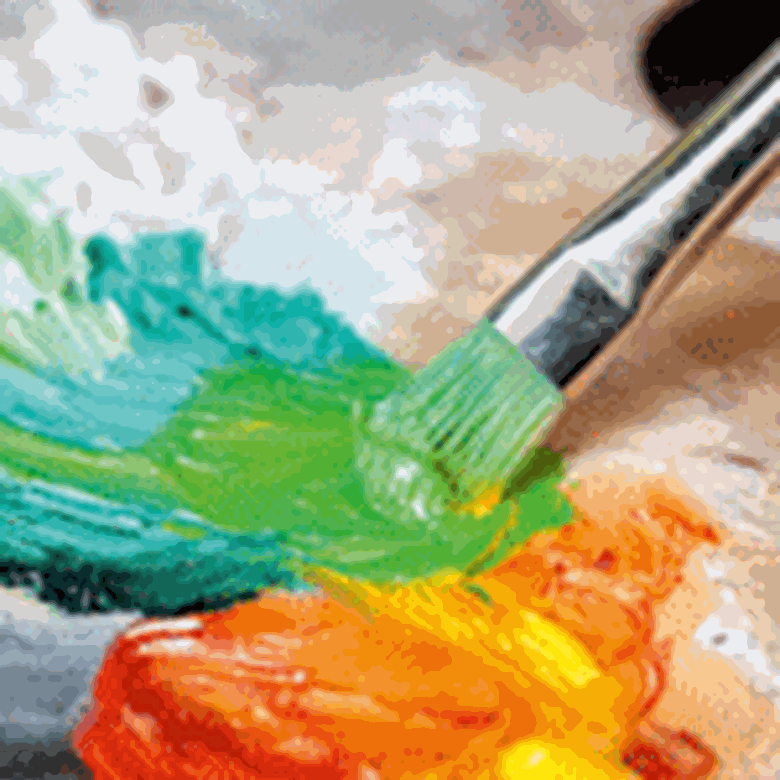Areas of Learning and Development: Specific area: Expressive Arts and Design
Jan Dubiel, national development co-ordinator, Early Excellence
Friday, April 27, 2012
Jan Dubiel explains the changes to Expressive Arts and Design in the revised framework

NEW EDUCATIONAL PROGRAMME
'Expressive arts and design involves enabling children to explore and play with a wide range of media and materials, as well as providing opportunities and encouragement for sharing their thoughts, ideas and feelings through a variety of activities in art, music, movement, dance, role-play, and design and technology.' (Revised Statutory Framework, paragraph 1.6)
Perhaps the most significant change to this area of learning is, in fact, its title. The change from Creative Development reflects an acknowledgement that creativity is not exclusively the preserve of artistic expression but equally applicable, evident, possible and desirable in all seven areas of learning and development.
This continues to be expressed and supported in 'Creating and thinking critically', one of the three Characteristics of Effective Learning given greater prominence under the new framework and which focuses on the 'behaviours' of creativity.
CONTENT AND CHANGES
Much of the content will be recognisable from the previous area of learning, and some small changes to reduce the repetition are also evident.
As discussed in the original Tickell review of the EYFS, the purpose of the changes were not to reduce the breadth of this area of learning, but rather to '(focus) attention more clearly on children's experiences of exploring and learning about creative and artistic expression in parallel with their desire to express and represent their experiences in diverse ways' (page 105).
The two new goals acknowledge that expression in these forms requires both the technique and skills identified in 'Exploring and using media and materials' and the representation of ideas and feelings identified in 'Being imaginative'.
There is also a clear intention to ensure that all forms of artistic expression are included equally, and as a consequence music and dance have been incorporated into 'Being imaginative'.
This area has also been modified to include 'Developing imagination and imaginative play' in order to ensure that 'imaginative and symbolic play are recognised as important elements which reflect the insights, ideas and experiences of children and support children's ability to see things from another person's point of view' (Tickell review, annex 10).
ESSENTIALS FOR PRACTICE
Practitioners will need to continue ensuring that they provide opportunities for children both to learn new skills and forms of expression and to use and explore these new skills in their play. Open-ended and accessible resources that children can use to express or explore an idea will continue to be a vital aspect of effective practice.
In keeping with all the areas of learning, there needs to be a continued awareness and commitment to 'the individual needs, interests, and stage of development of each child in (practitioners') care, and use (of) this information to plan a challenging and enjoyable experience for each child in all of the areas of learning and development' (Statutory Framework, paragraph 1.7).
Practitioners also need to be aware of the clear guidance regarding the balance of activity: 'There is an ongoing judgement to be made by practitioners about the balance between activities led by children, and activities led or guided by adults' (Statutory Framework, paragraph 1.9).
In this area of learning, the ongoing judgement can take the form of awareness, through observation, that specific skills need to be modelled for the entire group. Equally, it can be apparent during children's self-initiated activity, where the sensitive and appropriate intervention to demonstrate or directly teach a skill or technique can transform a moment of frustration into a rich new seam of unexpected possibilities.
Although this is a 'Specific' rather than a 'Prime' area, care should be taken not to falsely and unnecessarily restrict opportunities. The Prime areas themselves develop most effectively through the context of artistic expression and this is often the point where children's PSED, communication and physical abilities are most clearly demonstrated.
EARLY LEARNING GOALS: NEW AND OLD
NEW
Expressive Arts and Design
Exploring and using media and materials: children sing songs, make music and dance, and experiment with ways of changing them. They safely use and explore a variety of materials, tools and techniques, experimenting with colour, design, texture, form and function.
Being imaginative: children use what they have learnt about media and materials in original ways, thinking about uses and purposes. They represent their own ideas, thoughts and feelings through design and technology, art, music, dance, role-play and stories.
OLD
Creative Development
By the end of the EYFS, children should:
Being creative - responding to experiences, expressing and communicating ideas
- Respond in a variety of ways to what they see, hear, smell, touch and feel
- Express and communicate their ideas, thoughts and feelings by using a widening range of materials, suitable tools, imaginative and role-play, movement, designing and making, and a variety of songs and musical instruments
Exploring media and materials
- Explore colour, texture, shape, form and space in two or three dimensions
Creating music and dance
- Recognise and explore how sounds can be changed, sing simple songs from memory, recognise repeated sounds and sound patterns and match movements to music
Developing imagination and imaginative play
- Use their imagination in art and design, music, dance, imaginative and role-play and stories
EYFS CONSULTATION FEEDBACK
1st consultation - Do you agree with the early learning goals relating to Expressive Arts and Design? Yes (58%), No (8%), Partly (32%) and Not sure (2%)
2nd consultation - Do you think any early learning goals are not worded or pitched correctly? Exploring and using media and materials (11%); being imaginative (14%).




